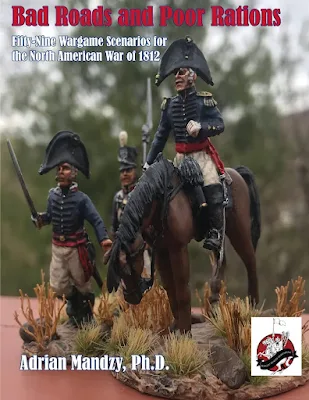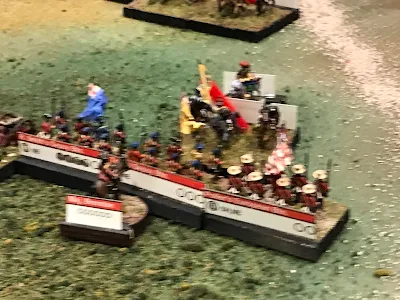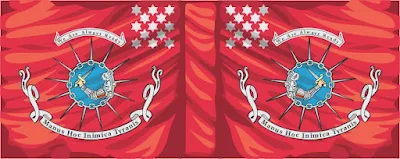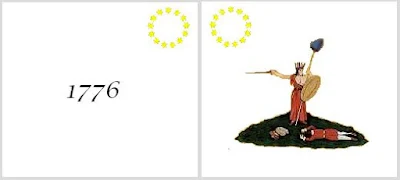What an outstanding book! I have been on the lookout for this for a while and picked it up at Historicon. "Bad Roads and Poor Rations" provides the War of 1812 gamer with 59 scenarios for battles ranging from minor skirmishes with 50 or so men per side to multi Brigade battles with thousands on each side. In addition there are also a number of naval actions included. Its a buffet for the gamer to pick and choose from in preparation for their next game. You will not only find information on battles and how to fight them but available figures for the period as well as ship models. Lastly, there is plenty of eye candy of outstanding Wargames figures in a variety of scales to inspire you. The book is 220 pages long and is paperback. Price is $39 but varied around the internet. What do you get for all this? Lets take a look!
First off the author. A serious scholar Dr. Adrian Mandzy is also a miniature wargamer. He is knowledgeable and excited about this period. Many of the pictures in the book are of his 40mm and 10mm figures. Turns out when I bought the book from the On Military Matters booth he was standing at the Winged Hussar booth next door. I introduced myself and we had a wonder conversation about the book, wargaming and the War of 1812. He also kindly autographed my copy. Outstanding!
The book is a hefty 220 pages. Its big and packed with information. There are 59 war game scenarios in the book. These range from small skirmishes to larger Brigade size actions. There are also naval actions which include landings and individual ship to ship actions. Something for everyone. On each section there is a brief background to the action as well as a equally brief description of the action itself. Terrain is discussed as it effected the action. Last there are suggestions on how to fight the battle and rules to add color and fun. And example would be night fighting at Lundy's lane. Each regiment that fires roll a D6 to see if they fire at a friendly unit or not. Another area the author touches in us native warriors. His suggestions for how they operate on the table top is well thought out and accurate for the time. Well done sir!
In addition there is a map of each battlefield as well as a order of battle of troops involved. The author gives you the number of troops in each Regiment/company/detachment. I like this rather then saying how many figures each unit must have. On the other hand the maps are at best general outlines. I think this is one area the book could be improved. Lastly at the end if each action us a suggested reading list is bibliography.
Each battle is organized by geographical location. If your looking for actions like Chippawa or Lundy's Lane you will find it in the in the Niagara Peninsula/Western Lake Ontario section. So if you have a particular area of interest this makes it easy to find. In addition you could fight a series of battles in a given area to recreate a campaign.
To inspire all gamers the book is filled with photos of wargame figures. These range in scale from 54mm plastics to 40mm Saber and Sash miniatures to 25mm Knuckkeduster miniatures to 10mm Pendraken figures and a few more in between. You want ships and boats? Wonderful looking sailing ships and also landing boats are shown. And a Appendix of Available Figures of War of 1812 miniatures. This divided by scale from 54mm to 40mm to 25mm to 15mm to 10mm. I especially like when he mentioned which figures work with other ranges.
As you can tell I am really excited about this book. I have had my eye on it for a while and it certainly lived up to my expectations. There is a lot in it and lots of ideas, inspiration and information to be gathered from it. If you are interested in the underappreciated period I highly recommend getting this book. It needs to be in your library. Very highly recommended!!


.jpg)


































